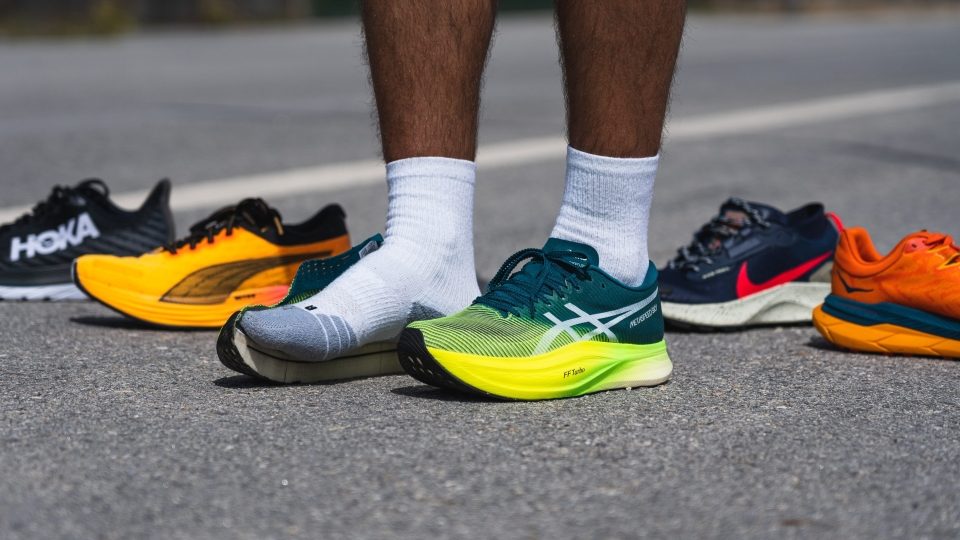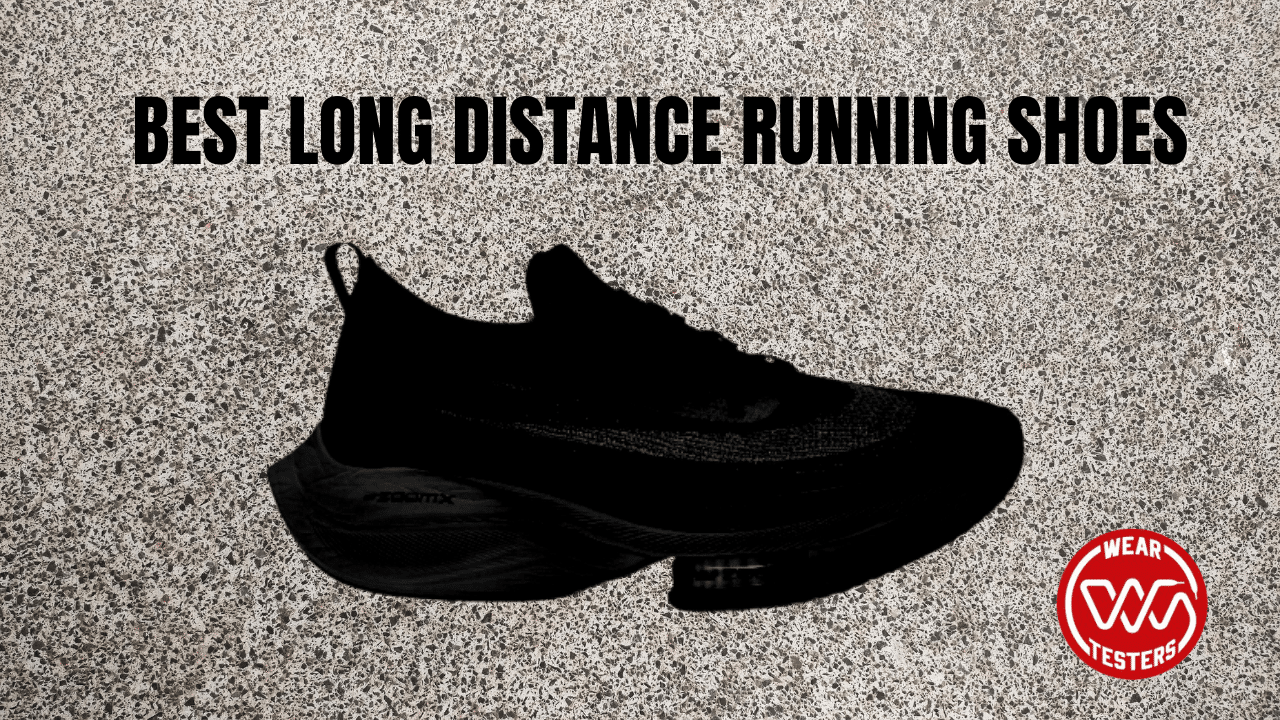What Shoe is Best for Running Long Distance?
The best shoe for running long distance vary depending on individual preference and needs, but some top options include the Nike ZoomX Vaporfly Next%, Brooks Ghost 13, and Hoka One One Rincon. These shoes offer cushioning, support, and durability to enhance performance and reduce the risk of injury during long runs.
Additionally, they are known for their lightweight design and responsiveness, providing optimal comfort and energy return. Whether you’re an experienced runner or just starting out, choosing the right shoe can have a significant impact on your long-distance running experience. By considering factors such as foot type, running style, and personal comfort, you can find the perfect shoe to take on your long-distance running journey.

Credit: runrepeat.com
Benefits Of Choosing The Right Running Shoe
Besides providing comfort and support, choosing the right running shoe can greatly improve performance and reduce the risk of injury when running long distances. The main benefit of a suitable running shoe is that it helps to enhance performance by promoting a comfortable stride, encouraging efficient movement, and maximizing energy transfer. By providing optimal cushioning and stability, these shoes help to reduce the impact on joints and muscles, allowing runners to maintain their pace and endurance for longer distances.
Moreover, selecting the right shoe for long-distance running can minimize the risk of injury. A well-fitting shoe that matches the runner’s anatomy and running style can provide proper support and stability, reducing the likelihood of developing common running-related injuries such as shin splints, plantar fasciitis, or stress fractures. Additionally, cushioning and shock absorption features of the shoe can help to absorb the impact forces and distribute them evenly throughout the foot, lowering the stress on vulnerable areas.
Key Factors To Consider When Selecting A Running Shoe
Key Factors to Consider When Selecting a Running Shoe:
- Cushioning and support: Choose a shoe that provides adequate cushioning to absorb impact and reduce the risk of injury during long distance running. Look for shoes with responsive foam or gel technology to provide optimal shock absorption. Additionally, make sure the shoe offers sufficient support to maintain proper foot alignment.
- Fit and comfort: Opt for a shoe that fits well and feels comfortable from the moment you put it on. Avoid shoes that are too tight or too loose, as this can lead to blisters and discomfort during long runs. Prioritize breathable materials and consider trying on different brands and models to find the perfect fit.
- Pronation and stability: Understand your pronation type (neutral, overpronation, or underpronation) to find a shoe that provides the right level of stability. Shoes with features like medial posts or dual-density midsoles can help correct overpronation, while neutral shoes are suitable for those with normal pronation.
Popular Types Of Running Shoes For Long Distance
Discover the top running shoes for long distance runs. From cushioned to stability shoes, find the perfect fit for your endurance training.
| Popular Types of Running Shoes for Long Distance |
|---|
| Neutral Shoes Stability Shoes Motion Control Shoes Runners prefer neutral shoes for long distance due to their versatile cushioning. Stability shoes offer firmer support for overpronators. Motion control shoes provide extra stability for severe overpronation. |
Technology And Innovations In Long-distance Running Footwear
Long-distance running requires footwear that provides support and endurance. Lightweight materials such as mesh and synthetic overlays are essential for improved breathability and flexibility. These materials reduce the overall weight of the shoe. Energy-returning midsoles offer cushioning and responsiveness, decreasing fatigue during extended runs. The design of long-distance running shoes focuses on stability and reduced impact on the legs. Advanced innovations like carbon plates and air technology have also enhanced performance and comfort. It’s important to select a shoe that fits well and provides adequate arch and ankle support to prevent injuries and discomfort during longer runs. Choosing the right long-distance running shoe is pivotal for improving performance and reducing the risk of injury.
Testing And Finding The Right Shoe For Your Running Style
When it comes to choosing the best shoe for long-distance running, it’s important to conduct gait analysis to understand your running style. Trying different brands and models can help in finding the perfect fit and support. Look for cushioning and stability features that suit your foot arch and pronation. The right shoe can prevent injuries and enhance performance. Consider factors like comfort, durability, and breathability in your decision. A well-fitted shoe with good traction can help maintain stability and reduce fatigue during long runs.

Credit: www.roadrunnersports.com
Maintenance And Replacement Guidelines For Long-distance Running Shoes
Discover the essential maintenance guidelines for choosing the perfect running shoes for long-distance runs. Prioritize durability, cushioning, and proper fit to maximize performance and prevent injuries. Select shoes with quality materials and support to enhance your running experience and endurance.
| When to replace shoes: Replace long-distance running shoes every 300-500 miles to prevent injuries. |
| Cleaning and care tips: After each run, wipe shoes with a damp cloth and let them air dry. Avoid machine-washing or drying the shoes, as it can damage the materials. |

Credit: weartesters.com
Frequently Asked Questions On What Shoe Is Best For Running Long Distance?
Which Shoes Are Best For Long Running?
The best shoes for long running are those with ample cushioning, good support, and a comfortable fit. Look for well-known brands designed specifically for running, and consider getting fitted at a specialty store for personalized recommendations. Adequate cushioning and support are essential to minimize fatigue and reduce the risk of injury.
How Do I Choose Long Distance Running Shoes?
To choose long distance running shoes: 1. Consider your foot type, arch support, and pronation. 2. Look for shoes with good cushioning and shock absorption. 3. Ensure a proper fit and enough room for toe movement. 4. Check for durable materials and breathable mesh.
5. Try different brands and models to find the right balance of comfort and support.
What Makes A Good Long Run Shoe?
A good long run shoe has proper cushioning and support to reduce impact, a durable outsole for traction, and a comfortable fit to prevent blisters and discomfort. It’s important to choose a shoe that matches your running style and foot shape for optimal performance and injury prevention.
Conclusion
After considering all the factors, it is clear that finding the right shoe for running long distance is crucial for performance and injury prevention. With the variety of options available, it is important to prioritize comfort, support, and durability when making your choice.
By selecting a shoe that meets your individual needs, you can enhance your running experience and achieve optimal results.







